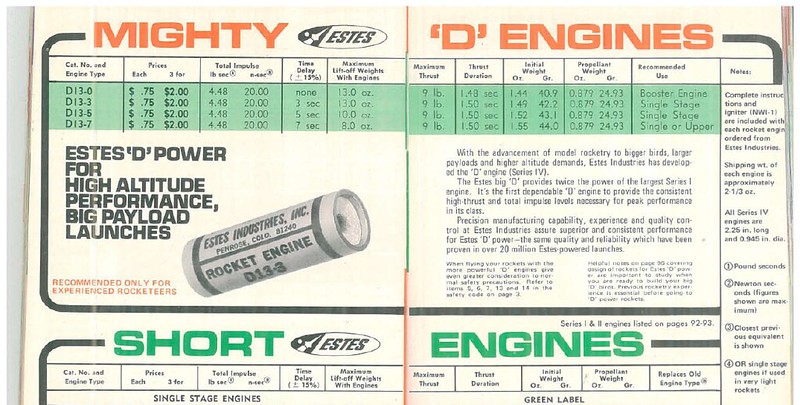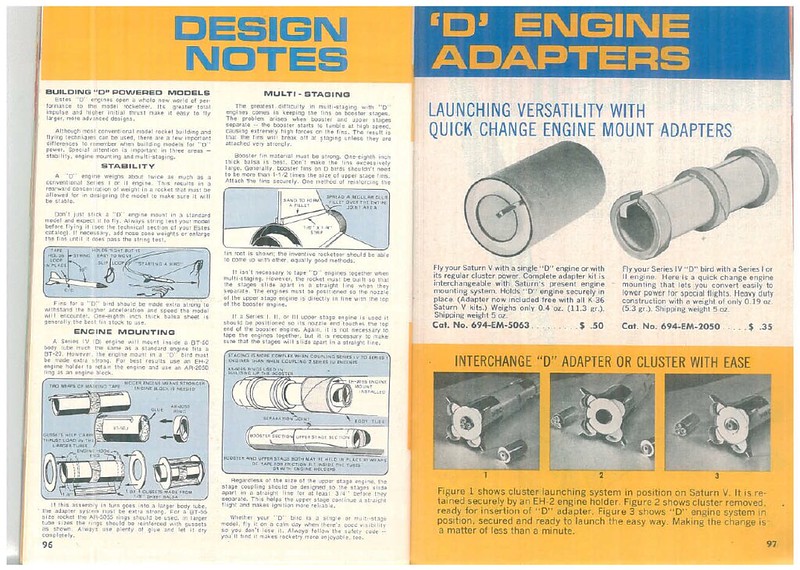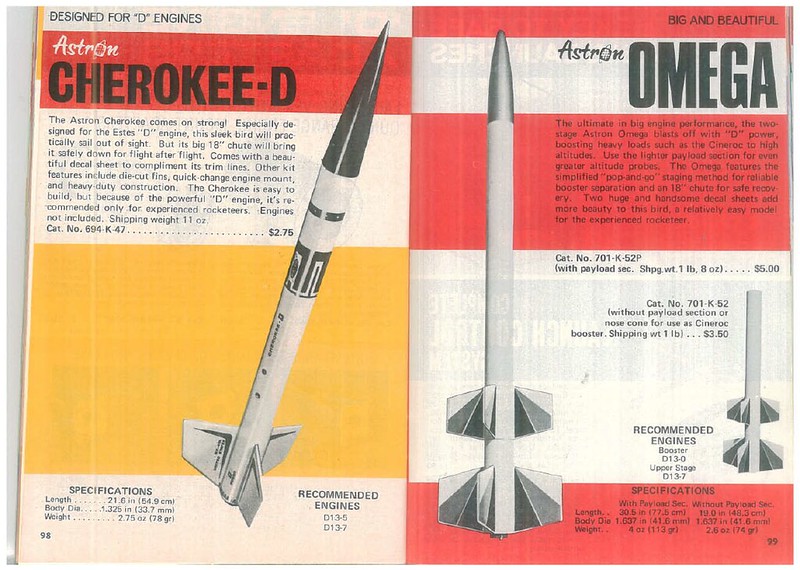- Joined
- Mar 27, 2013
- Messages
- 22,536
- Reaction score
- 14,949
In 1970 Estes introduced the "MIGHTY ESTES 'D' ENGINES" on page 94 and 95 of their catalog.

On page 96 and 97 we got "DESIGN NOTES" and "'D' ENGINE ADAPTERS".

And the first "DESIGNED FOR "D" Engines" kits in its lineup appeared on page 98 and 99. The Cat. No. 694... K-47 Astron CHEROKEE-D, Cat. No. 701-K52P Astron OMEGA, and the Cat. No. 701-K-52 OMEGA (without payload section or nosecone for use as Cineroc booster).

And in 1972, the "D13" motors were gone... Replaced by the "D12" motors that we still use today.
I only just learned of the D13 motors yesterday. In all my research on the OMEGA and its variants, I had overlooked the recommended motors, until it was pointed out to me by someone at Estes. They referred to it as the 'D13 "BOOM!" Engines', and informed me that it was subject to a recall.
Tell me more.

On page 96 and 97 we got "DESIGN NOTES" and "'D' ENGINE ADAPTERS".

And the first "DESIGNED FOR "D" Engines" kits in its lineup appeared on page 98 and 99. The Cat. No. 694... K-47 Astron CHEROKEE-D, Cat. No. 701-K52P Astron OMEGA, and the Cat. No. 701-K-52 OMEGA (without payload section or nosecone for use as Cineroc booster).

And in 1972, the "D13" motors were gone... Replaced by the "D12" motors that we still use today.
I only just learned of the D13 motors yesterday. In all my research on the OMEGA and its variants, I had overlooked the recommended motors, until it was pointed out to me by someone at Estes. They referred to it as the 'D13 "BOOM!" Engines', and informed me that it was subject to a recall.
Tell me more.
Last edited:





